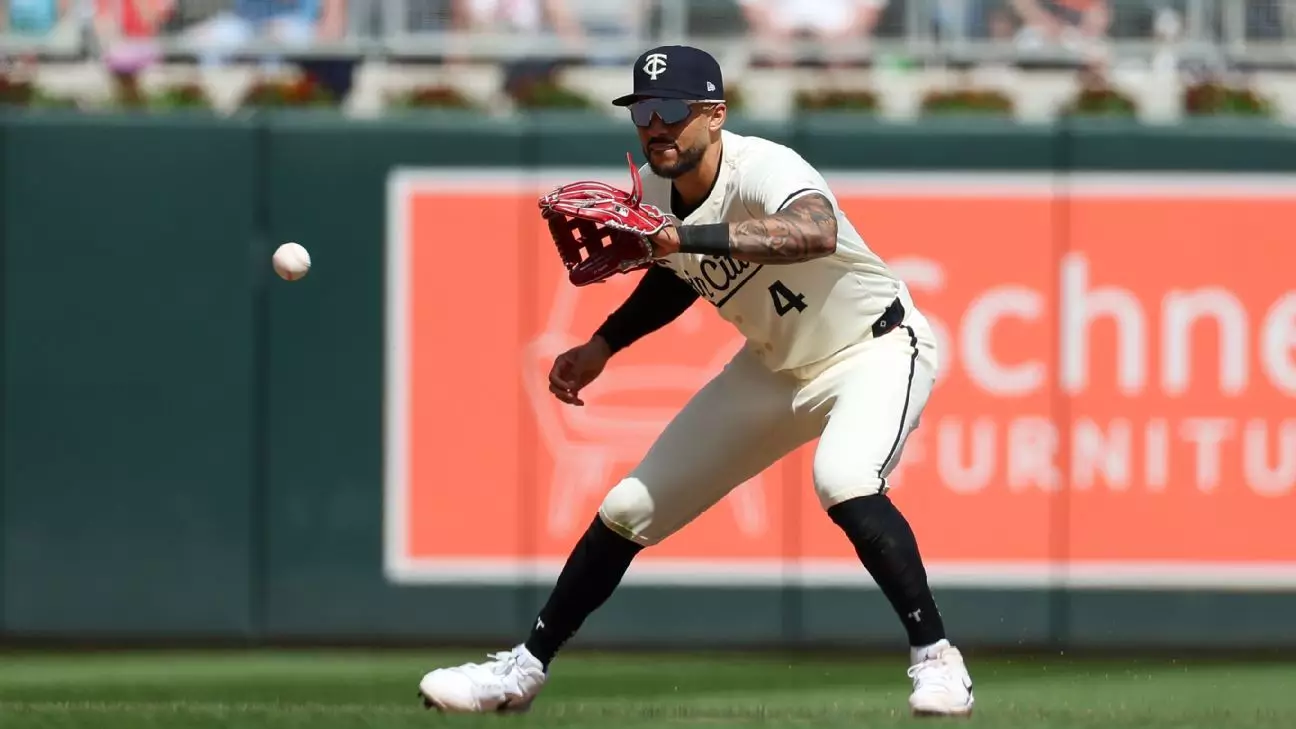The world of professional sports often highlights the unwavering grit of athletes who battle through injuries and setbacks. Carlos Correa, the talented shortstop for the Minnesota Twins, is a prime example. The past two seasons have served as a testament to his ability to navigate adversity, battling plantar fasciitis that severely hindered his performance. As he prepares for the upcoming spring training, Correa’s commitment to overcoming these physical challenges showcases not only his resilience but also the intricate relationship between an athlete’s health and their performance on the field.
Correa had initially found his stride in Minnesota, marking the onset of what many considered his most impactful season since his renowned stint with the Houston Astros in 2017. However, the onset of plantar fasciitis, intensified by a challenging series played on artificial turf in June, proved detrimental. Despite playing through the pain, it eventually sidelined him for over two months, contributing significantly to the Twins’ disappointing finish. This narrative serves as a stark reminder of how one player’s health can ripple through a team’s performance.
After his struggles with injuries, Correa sought solutions to regain his full potential, demonstrating an impressive commitment to recovery. His proactive approach involved unconventional methods, including shockwave therapy aimed at repairing damaged tissue in his foot. This kind of treatment underscores a growing trend in sports medicine—where athletes explore innovative techniques to enhance recovery time and performance capabilities. The holistic approach he adopted mirrors modern best practices in athlete care, emphasizing both immediate relief and long-term strength building.
Correa’s self-implemented regimen is commendable, especially his choice to engage in barefoot walking to strengthen his feet. However, while one can admire such a hands-on attitude, it raises questions about the degree of reliance athletes have on non-traditional recovery practices. As Correa continues to navigate his journey back to peak form, it’s essential to consider the balance between innovation and the need for professional oversight in rehabilitation processes. In this high-stakes environment, the potential for missteps exists, and athletes must always prioritize expert guidance.
Looking ahead, the Twins are strategizing on how to incorporate Correa effectively while navigating the constraints presented by his previous injuries. It appears they are ready to explore more games in the designated hitter role to alleviate some physical stress, reflecting a player-centric approach that prioritizes the athlete’s welfare, particularly for someone who has faced extensive injury challenges.
Moreover, with the Twins’ infield showcasing depth through young talents like Royce Lewis and Brooks Lee, the team is strategically positioned to maintain optimal performance levels, irrespective of Correa’s availability at shortstop. This adaptability is not only pivotal for Correa’s health but also critical for the overall functionality of the team in the upcoming season.
However, such adjustments prompt an evaluation of team dynamics and the potential for player development. The inclusion of younger players often means the need for mentorship and guidance, and Correa could play a crucial role in this aspect. Providing leadership while managing his recovery journey could lead to favorable outcomes for both him and the organization.
As the Twins gear up for the next baseball season, the atmosphere around the team is one of cautious optimism. Correa’s recent statements, particularly his affinity for Minnesota and its recreational opportunities, reflect a strong commitment to the franchise and its future. His no-trade clause allows him to maintain agency in his career, further establishing his alignment with the team’s vision.
Ultimately, Carlos Correa’s tale is one of perseverance. His journey through injury and rehabilitation speaks volumes about the larger narrative within professional sports—where physical trials become as significant as athletic triumphs. As he prepares for spring training, Correa is not merely looking to reclaim his former glory; he aims to be a cornerstone for a Twins team that aspires to achieve greater heights in the coming seasons. The upcoming chapter for both Correa and the Twins could be an exhilarating one, defined not just by the outcomes of games, but by resilience and tenacity in the face of adversity.


Leave a Reply